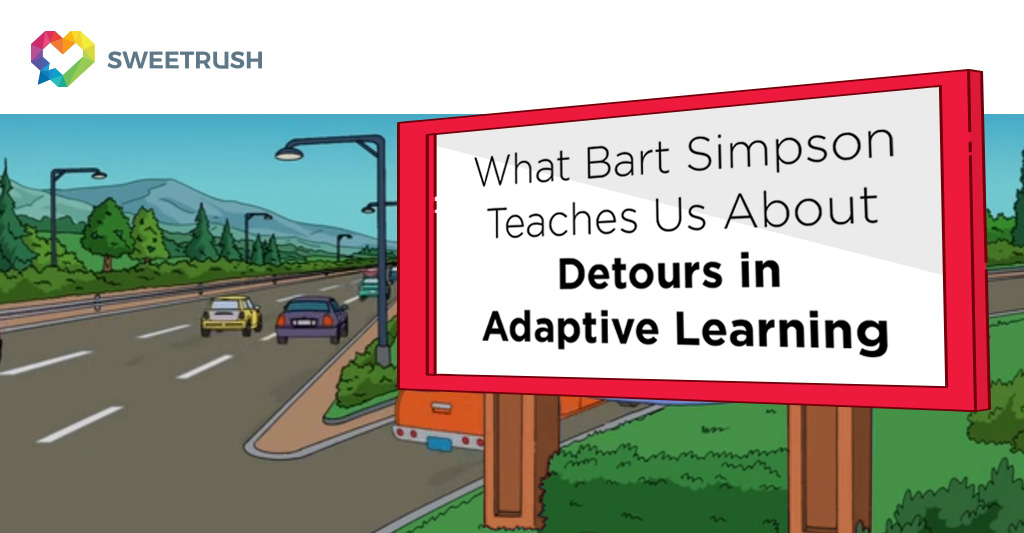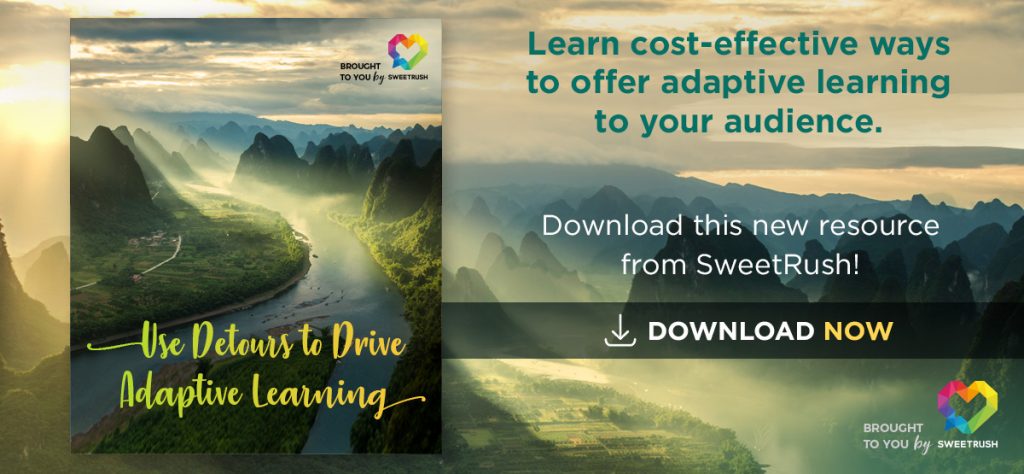According to an in-depth article by SweetRush, providing detours in adaptive learning reduces boredom and increases focus and attention.
I want to talk about The Simpsons.
Actually, I want to talk about a particular scene in season 6, episode 4, when the family takes a road trip to Itchy & Scratchy Land. It’s an exciting time for Bart and Lisa; it took them some time to convince their parents, Homer and Marge, to go, so both kids are really happy when they hit the road. The drive is long, though, and Bart and Lisa eventually get bored in the back seat of the car—until they see a billboard on the side of the road.
“Next Flickey’s, 680 miles,” it reads in big, bold letters accompanied by a picture of a cup of coffee and a doughnut. The kids get super excited as the billboards keep getting better: “Next Flickey’s, 416 miles,” “Next Flickey’s, 277 miles.” Finally, after they pass a billboard that says Flickey’s is 42 miles away, Bart, his eyes full of hope, asks Homer, “Dad, can we go to Flickey’s?”
“No,” says Homer, and the family car drives past the restaurant.
Then the next billboard says, “Next Flickey’s, 25,000 miles,” and the kids are once again bored out of their minds.
Trust me, it’s funnier when you watch it:
Why is an old cartoon episode even relevant here? Well, I believe this scene works as a metaphor for an important challenge in learning and development (L&D): the challenge of giving learners what they want to learn while keeping them engaged and on track to meet our learning objectives.
We’re talking about adapting your training to each learner’s knowledge and preferences, answering questions, offering complementary information, and avoiding repetition of information.
Say you’re an L&D manager and you’ve hired a new employee, Bob. On his first day, you talk about the waterfall method, which your company uses to develop training. Bob interrupts and asks, “What’s the waterfall method?” You then stop and explain how that process works.
That deviation—when you stop and adapt your conversation with someone to make sure everything’s clear, bring more information to the table, or skip what the learner already knows—is what John Cleave, Ph.D., an eLearning Technologist at SweetRush, calls “detours.”
In his article “Using Detours to Drive Adaptive Learning,” Cleave explains that a “well-designed eLearning program should include many (detours).”
“The big win with detours is efficiency. People sit through only the training they need and don’t waste time on topics they already know,” he writes. “By not telling learners things they already know, you reduce boredom, and learners are more likely to pay attention.”
Think of your learners as Bart and Lisa Simpson: they really need that detour to Flickey’s. They’re excited about the trip, but something has caught their eye, and they also want to learn more about that. Cleave’s advice is, in essence, don’t be a Homer. Give your learners all the Flickey’s detours they want, as well as an easy, intuitive path to return to the core learning, because that will keep them invested and engaged in whatever educational journey they’re taking.
Detours, however, can be conceptually challenging. To understand how to develop them, you’ll first need to get familiar with the concept of detours, their different types, and the hurdles they pose.
To learn all about detours in adaptive learning, and the processes for developing them in eLearning, make sure to read John Cleave’s in-depth article, available now for download.





